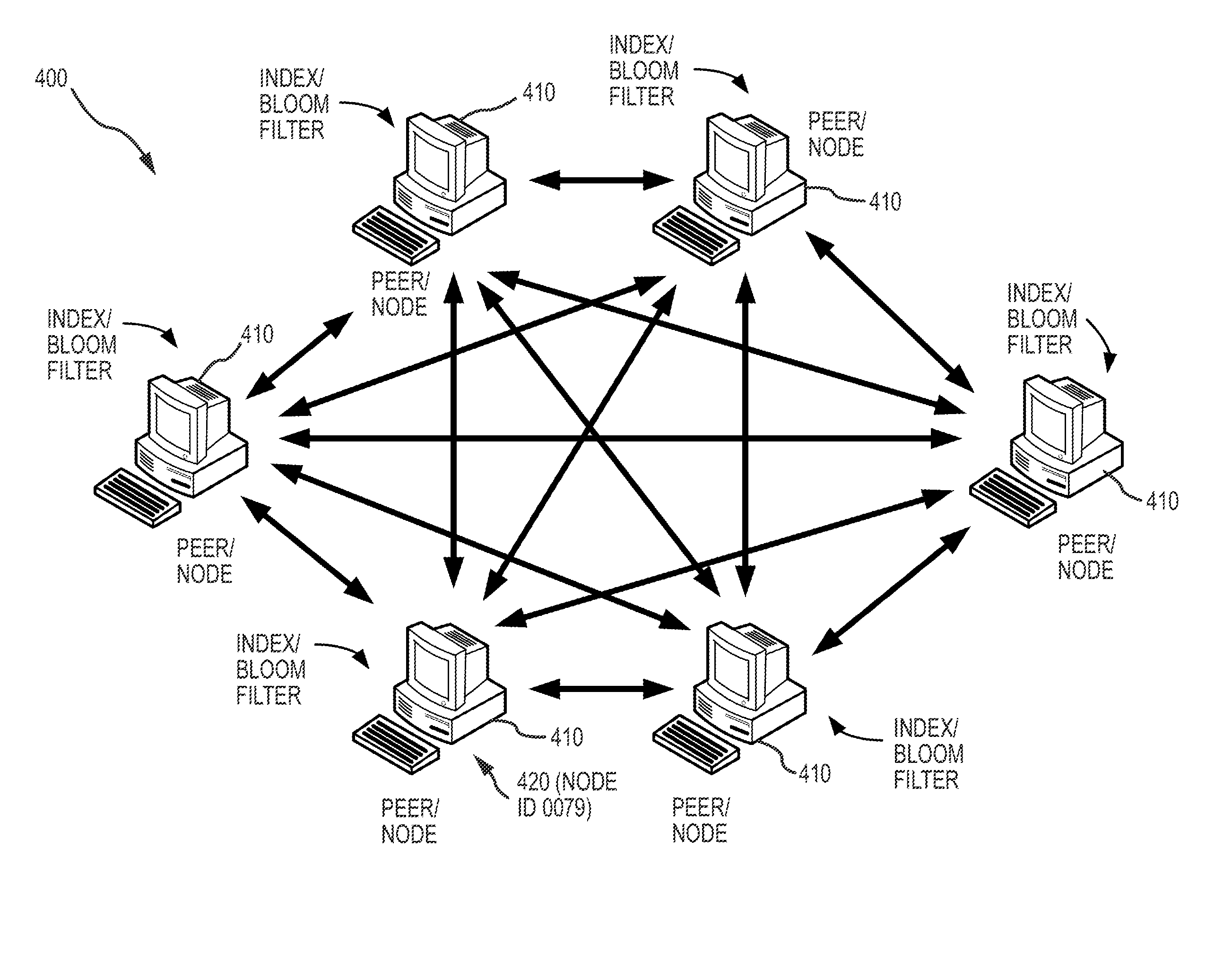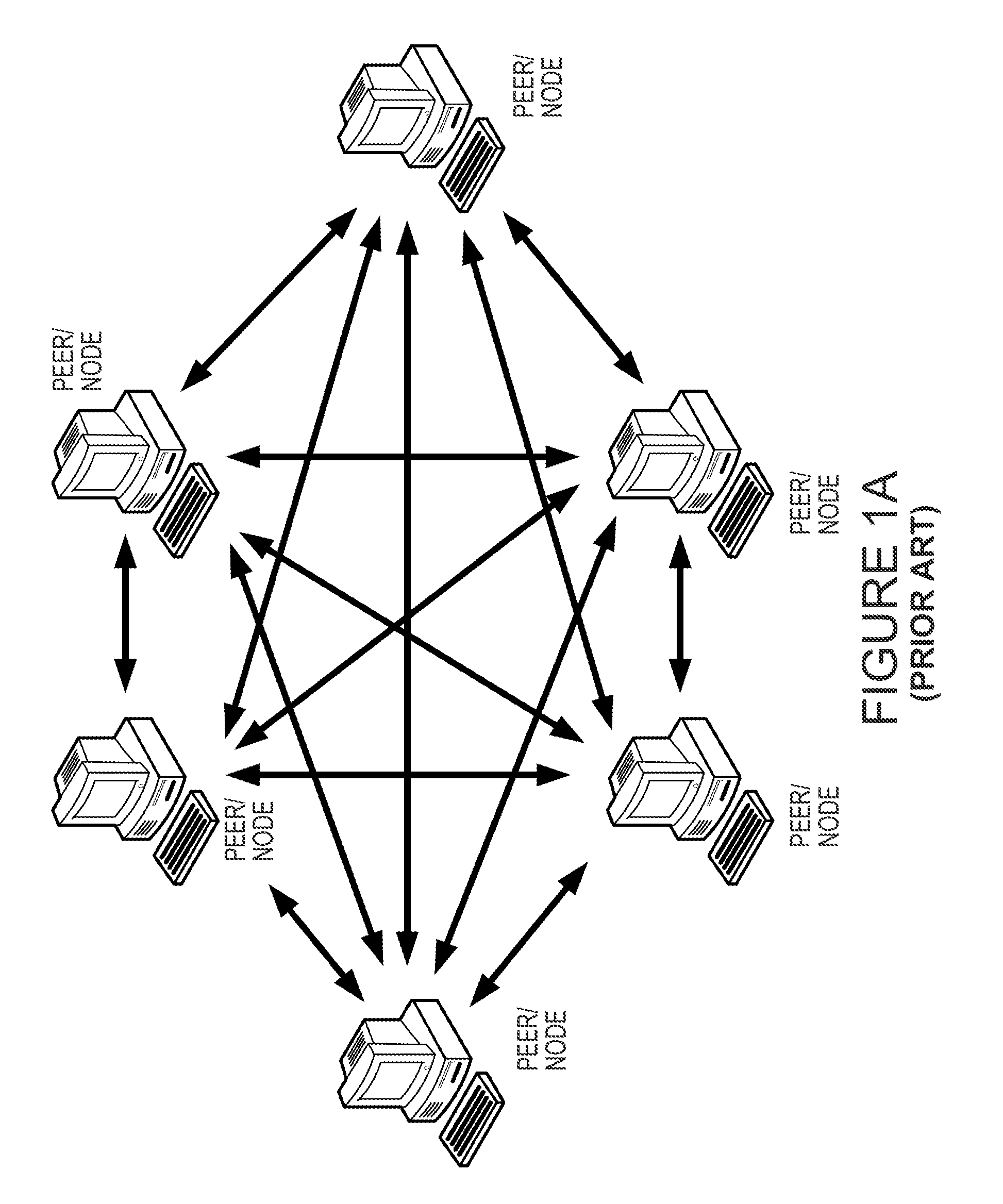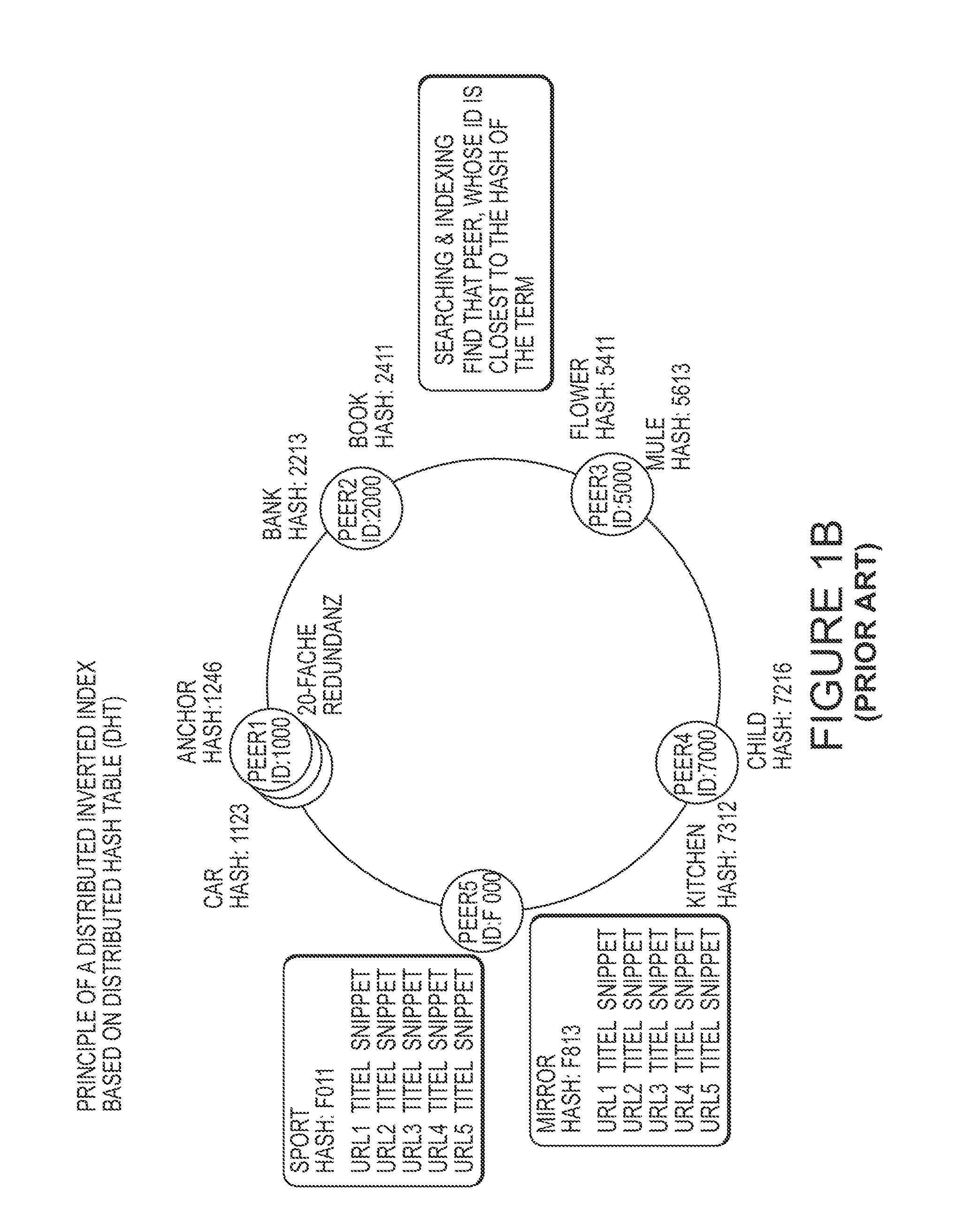System and method for distributed index searching of electronic content
a distributed index and electronic content technology, applied in the field of automatic search for electronic information content in computer networks, can solve the problems of inefficient search indexes, high cost of word partitioning, and inconvenient search, and achieve the effect of constant run-time searches and bandwidth hits
- Summary
- Abstract
- Description
- Claims
- Application Information
AI Technical Summary
Benefits of technology
Problems solved by technology
Method used
Image
Examples
Embodiment Construction
[0050]Reference will now be made in detail to the present exemplary embodiments of the invention, examples of which are illustrated in the accompanying drawings.
[0051]It is to be understood that the methods described herein may be implemented in various forms of hardware, software, firmware, special purpose processors, or a combination thereof. In particular, at least a portion of the present invention is preferably implemented as an application comprising program instructions that are tangibly embodied on one or more program storage devices (e.g., hard disk, magnetic floppy disk, FLASH memory, RAM, ROM, DVD, CD ROM, etc.) and executable by any device or machine comprising suitable architecture, such as a general purpose digital computer having a processor, memory, and input / output interfaces. It is to be further understood that, because some of the constituent system components and process steps described herein are preferably implemented in software, the connections between system...
PUM
 Login to View More
Login to View More Abstract
Description
Claims
Application Information
 Login to View More
Login to View More - R&D
- Intellectual Property
- Life Sciences
- Materials
- Tech Scout
- Unparalleled Data Quality
- Higher Quality Content
- 60% Fewer Hallucinations
Browse by: Latest US Patents, China's latest patents, Technical Efficacy Thesaurus, Application Domain, Technology Topic, Popular Technical Reports.
© 2025 PatSnap. All rights reserved.Legal|Privacy policy|Modern Slavery Act Transparency Statement|Sitemap|About US| Contact US: help@patsnap.com



